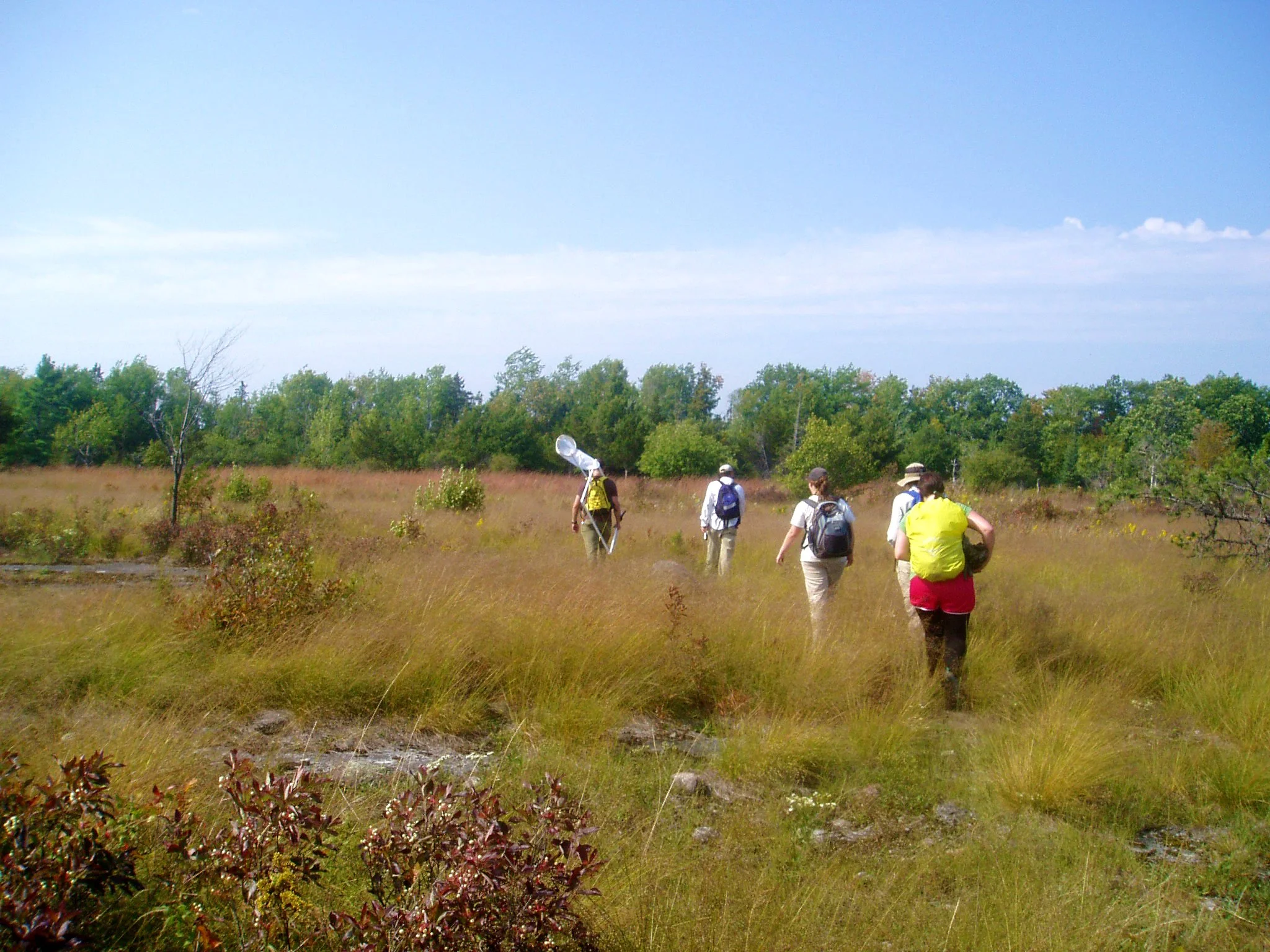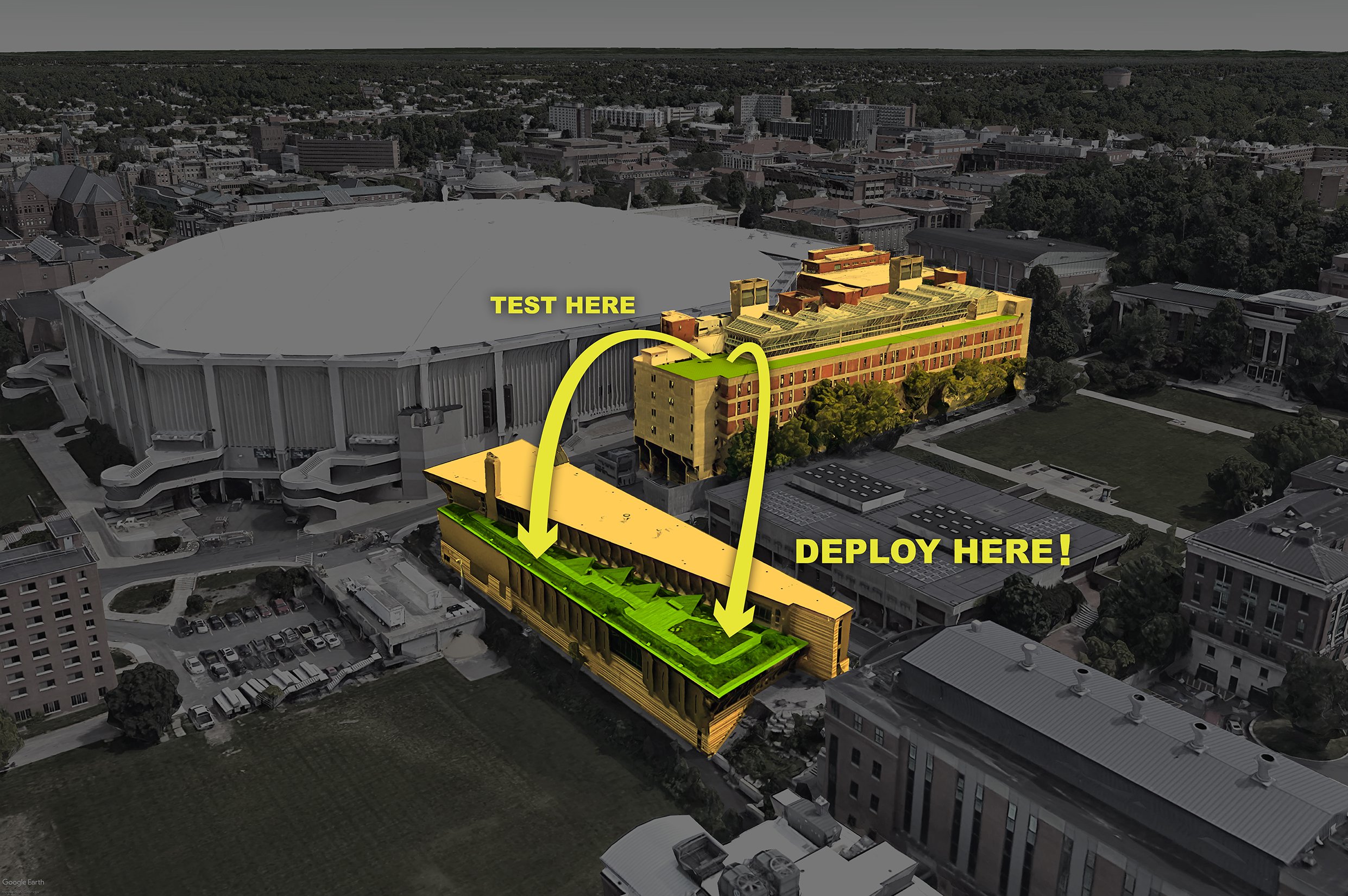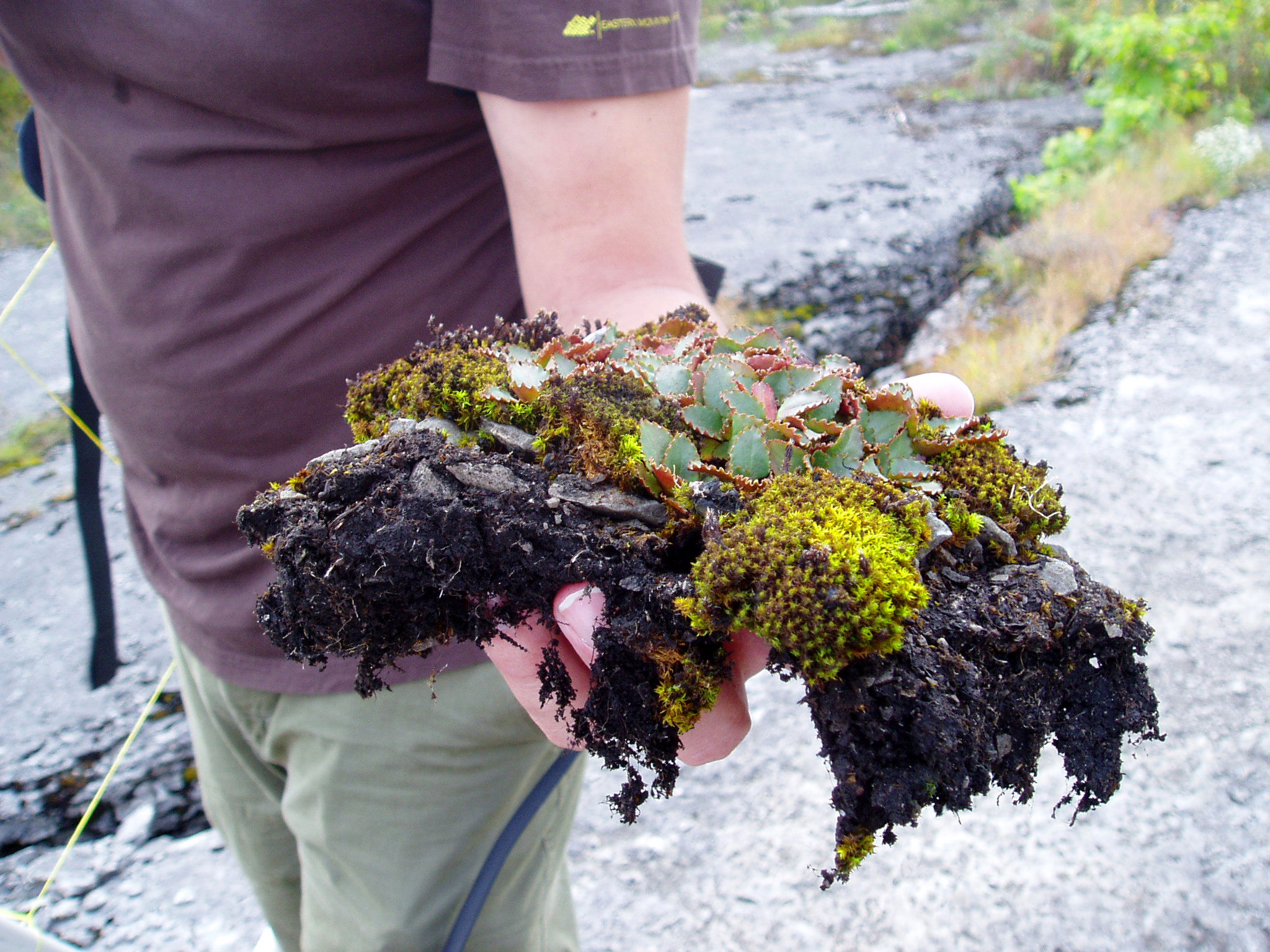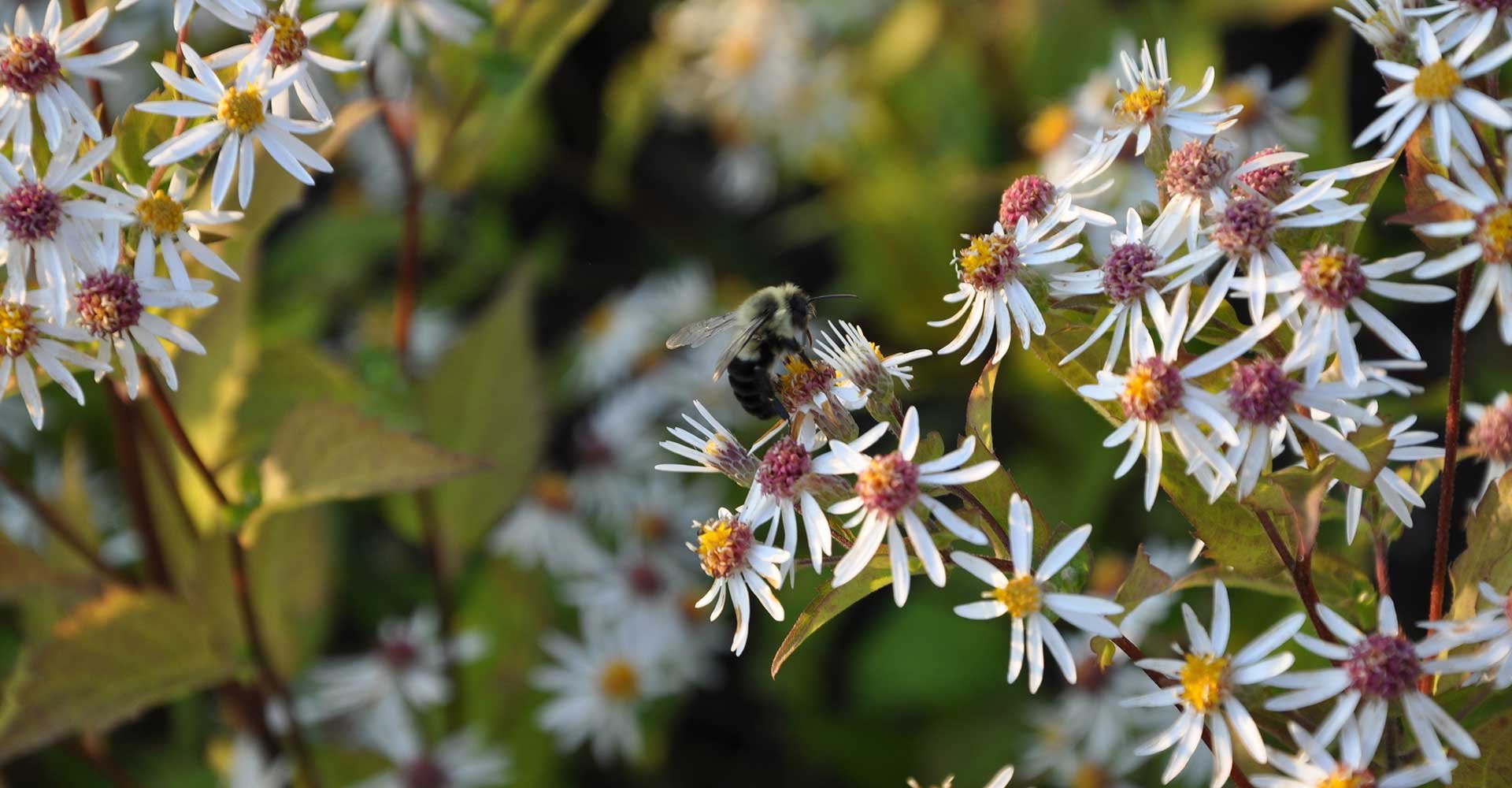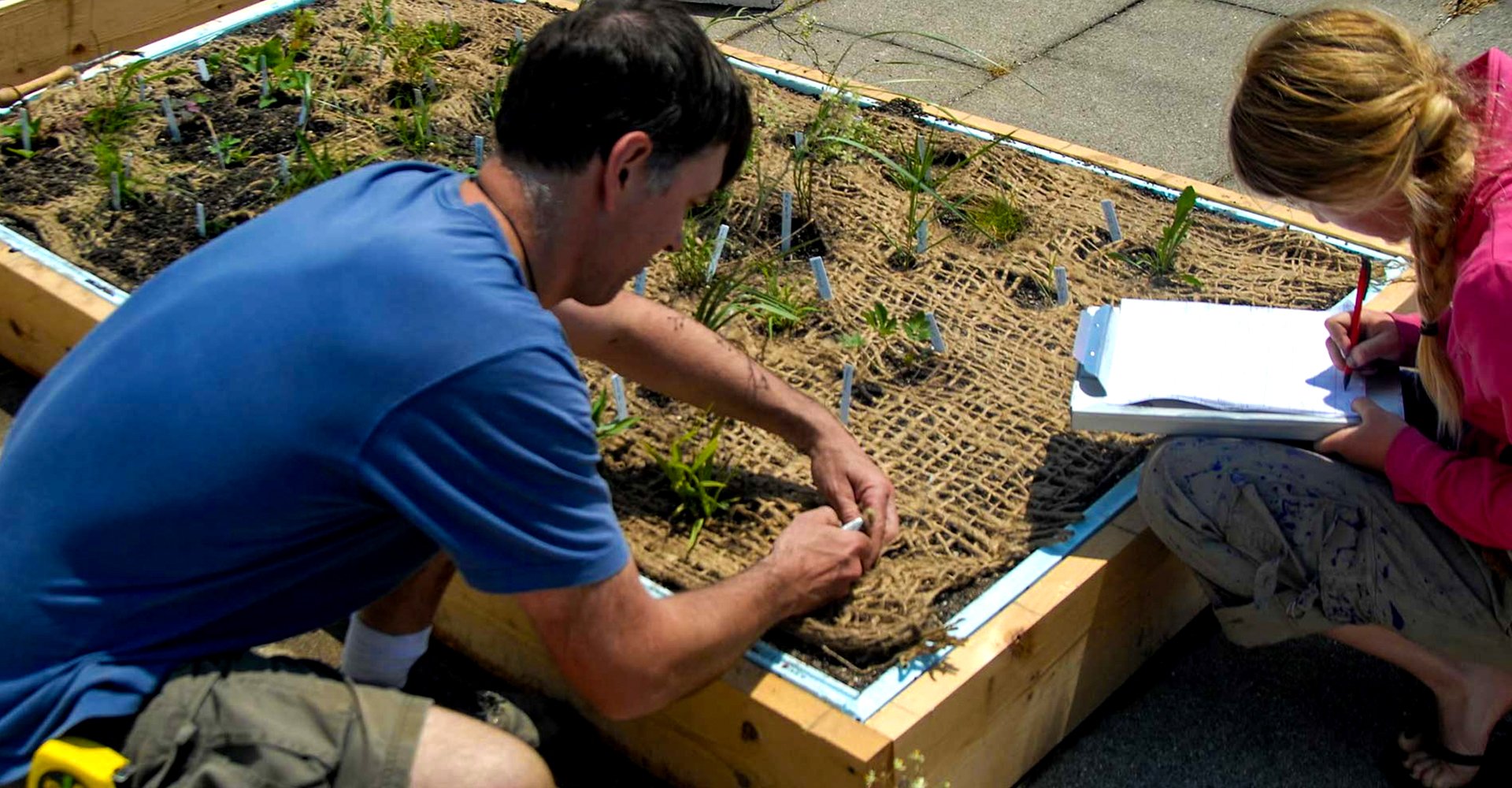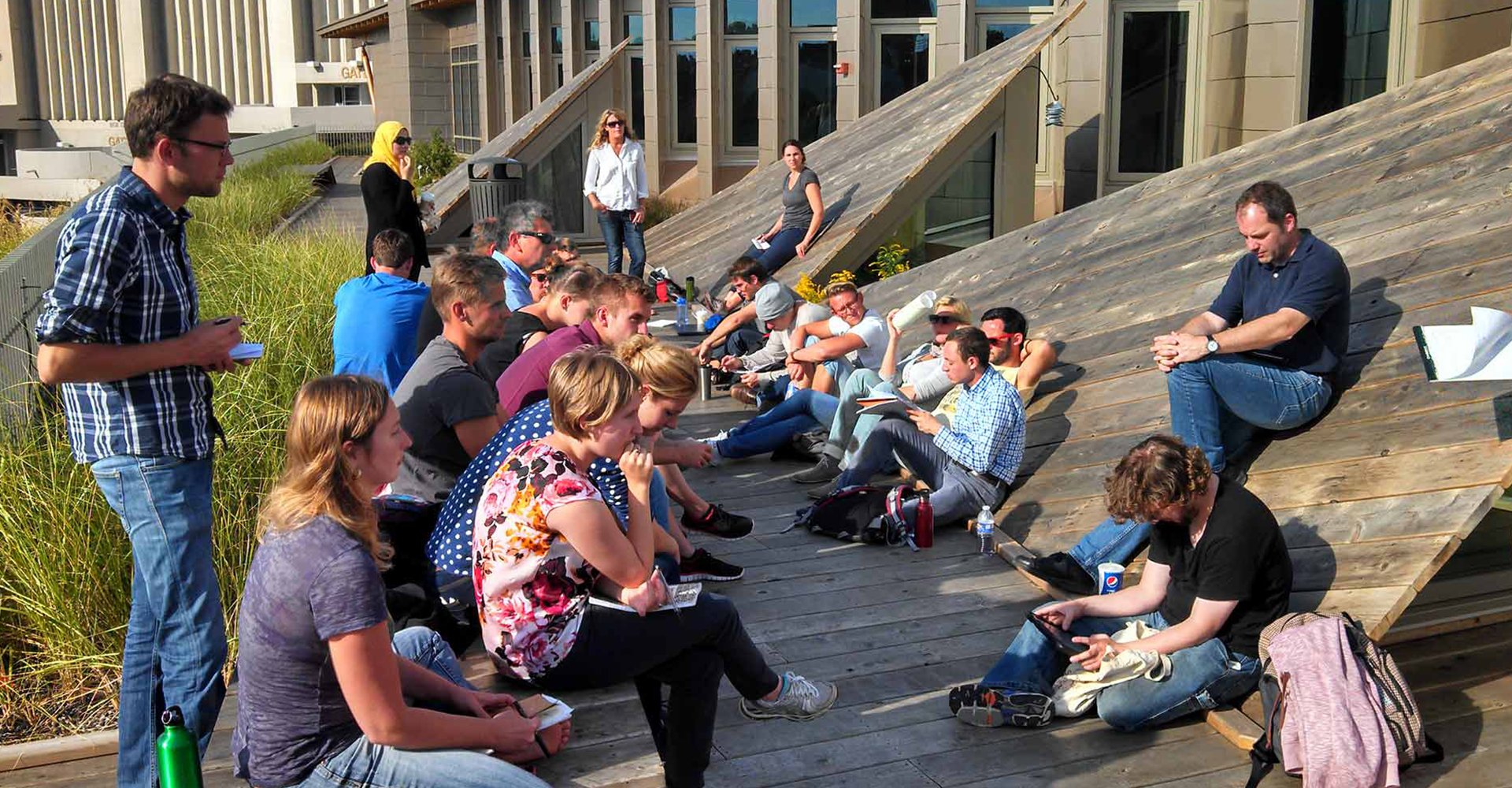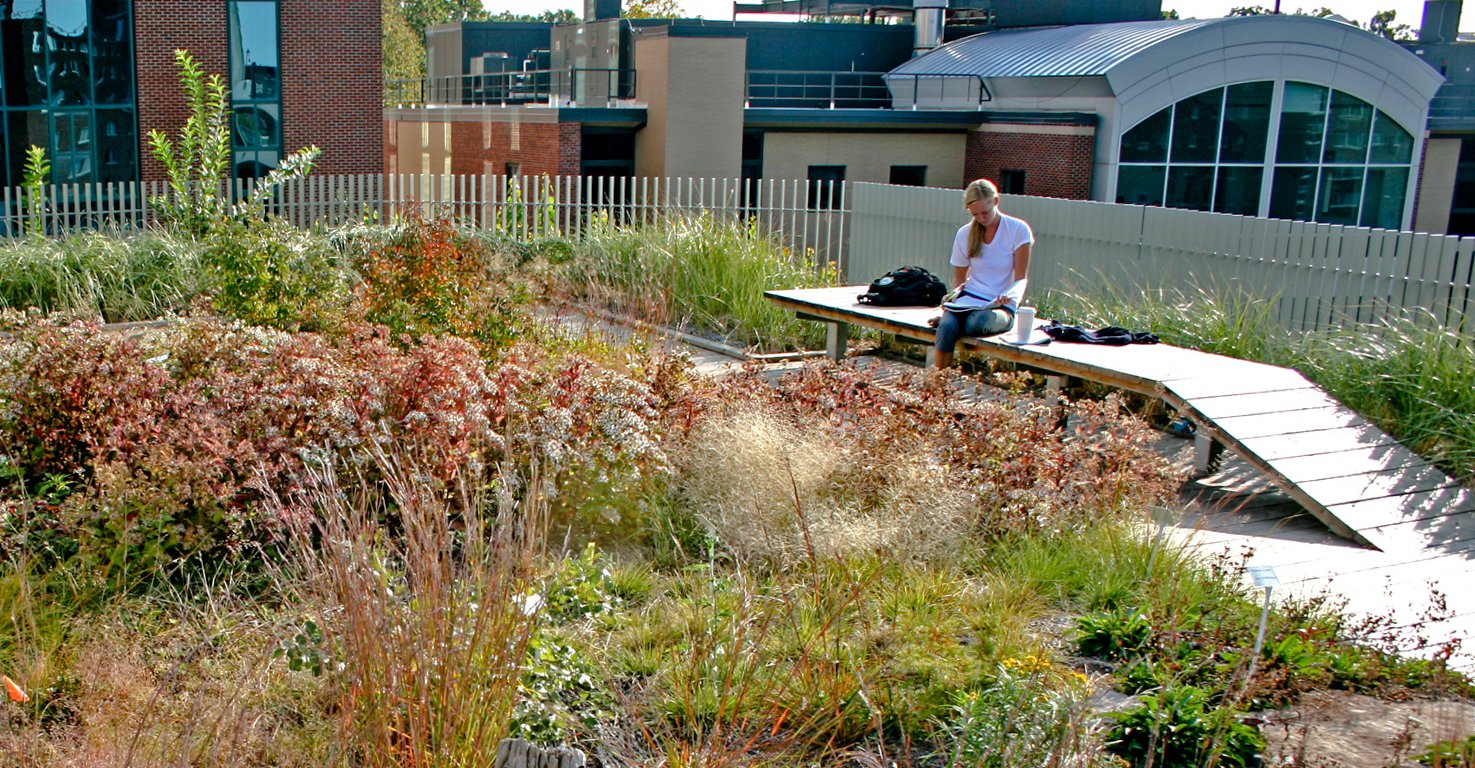
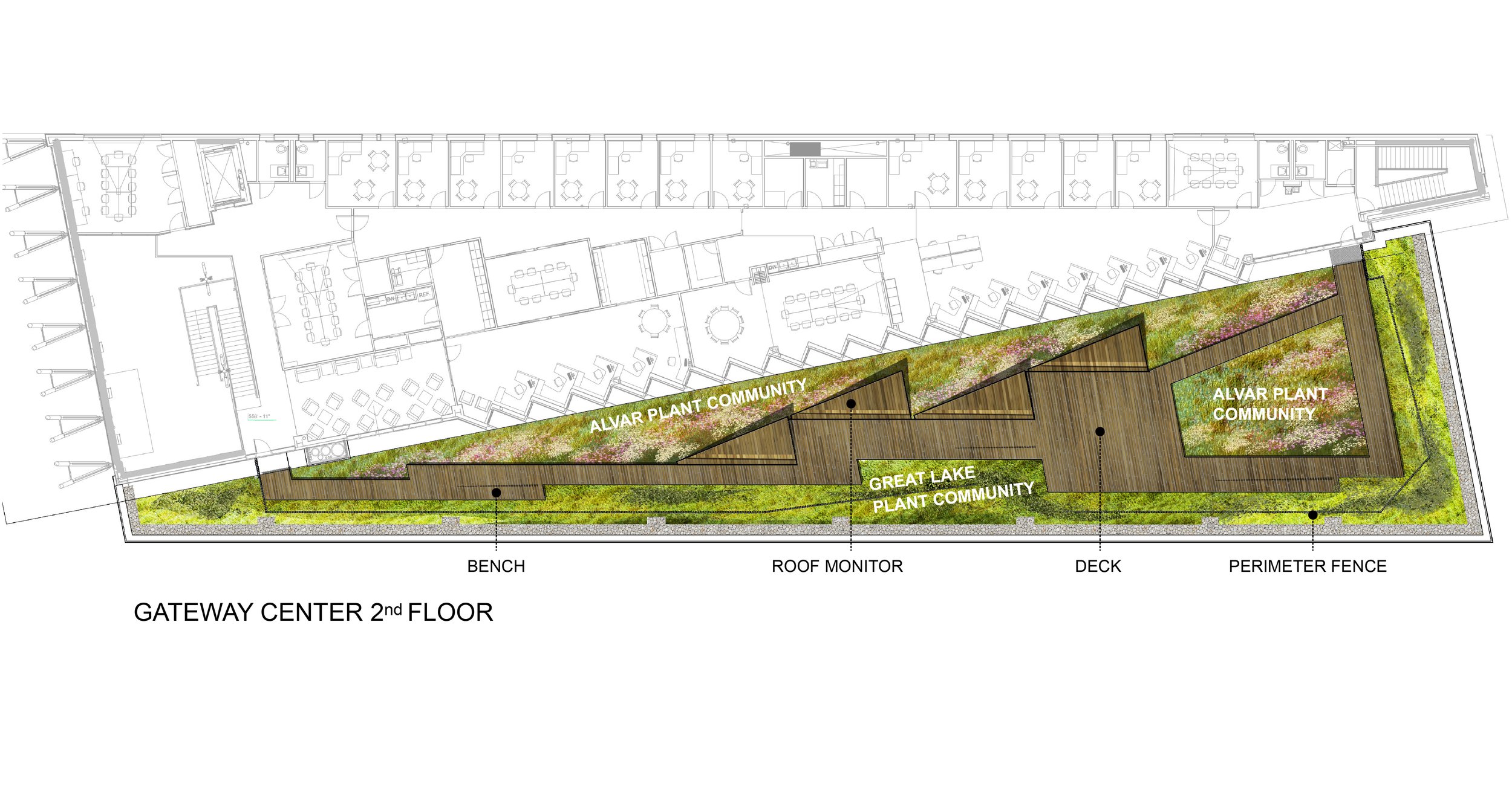
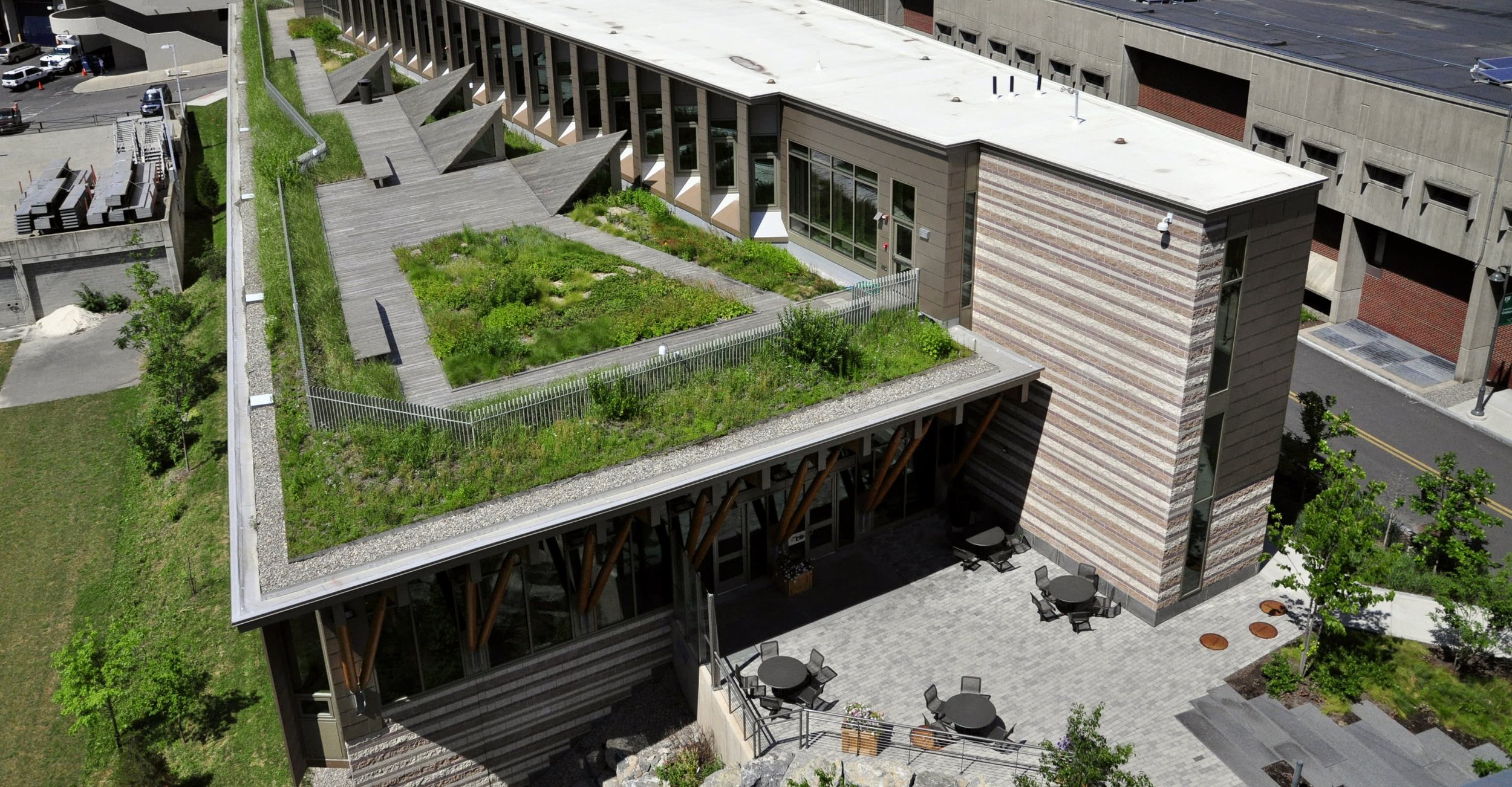
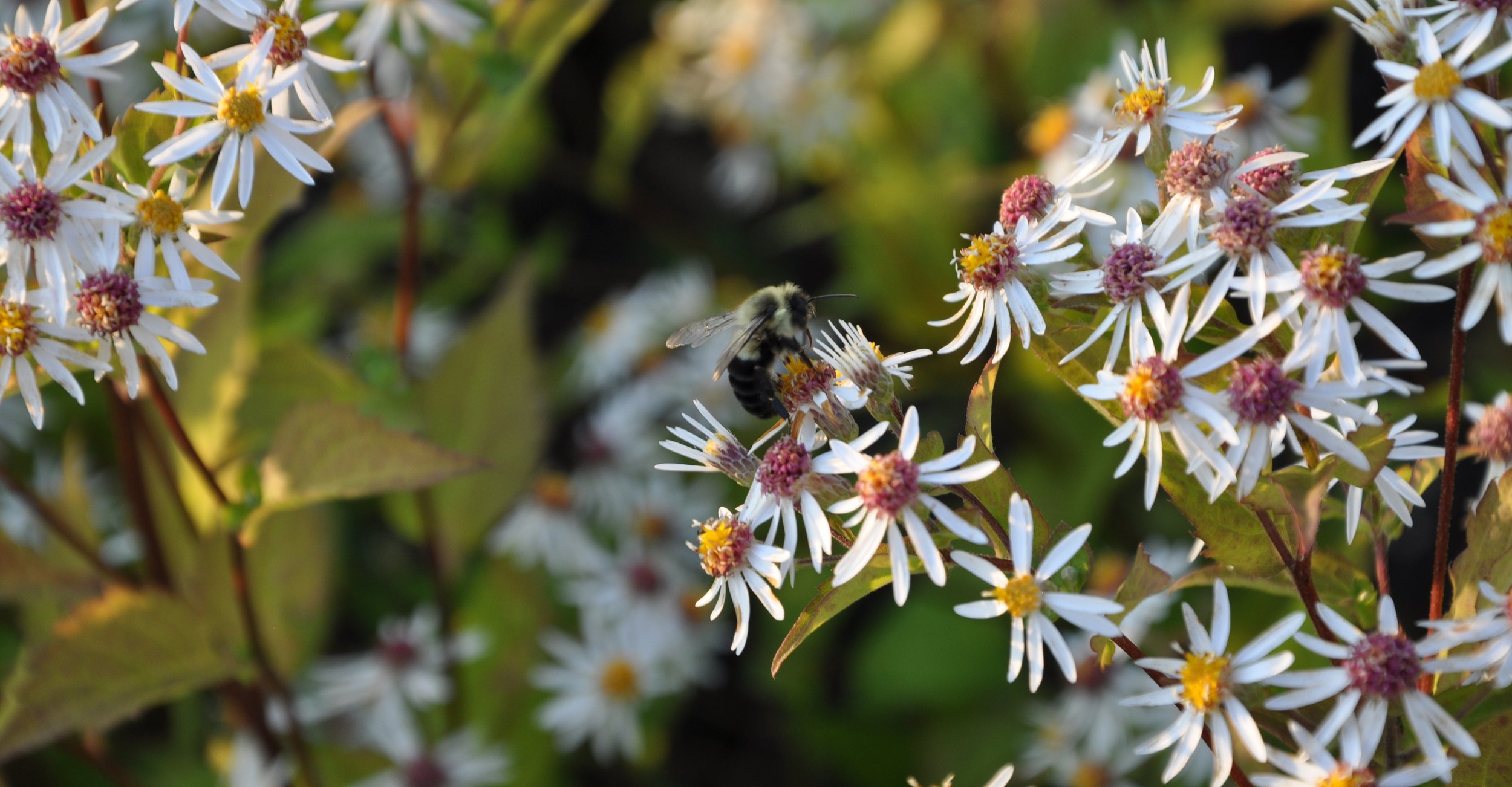
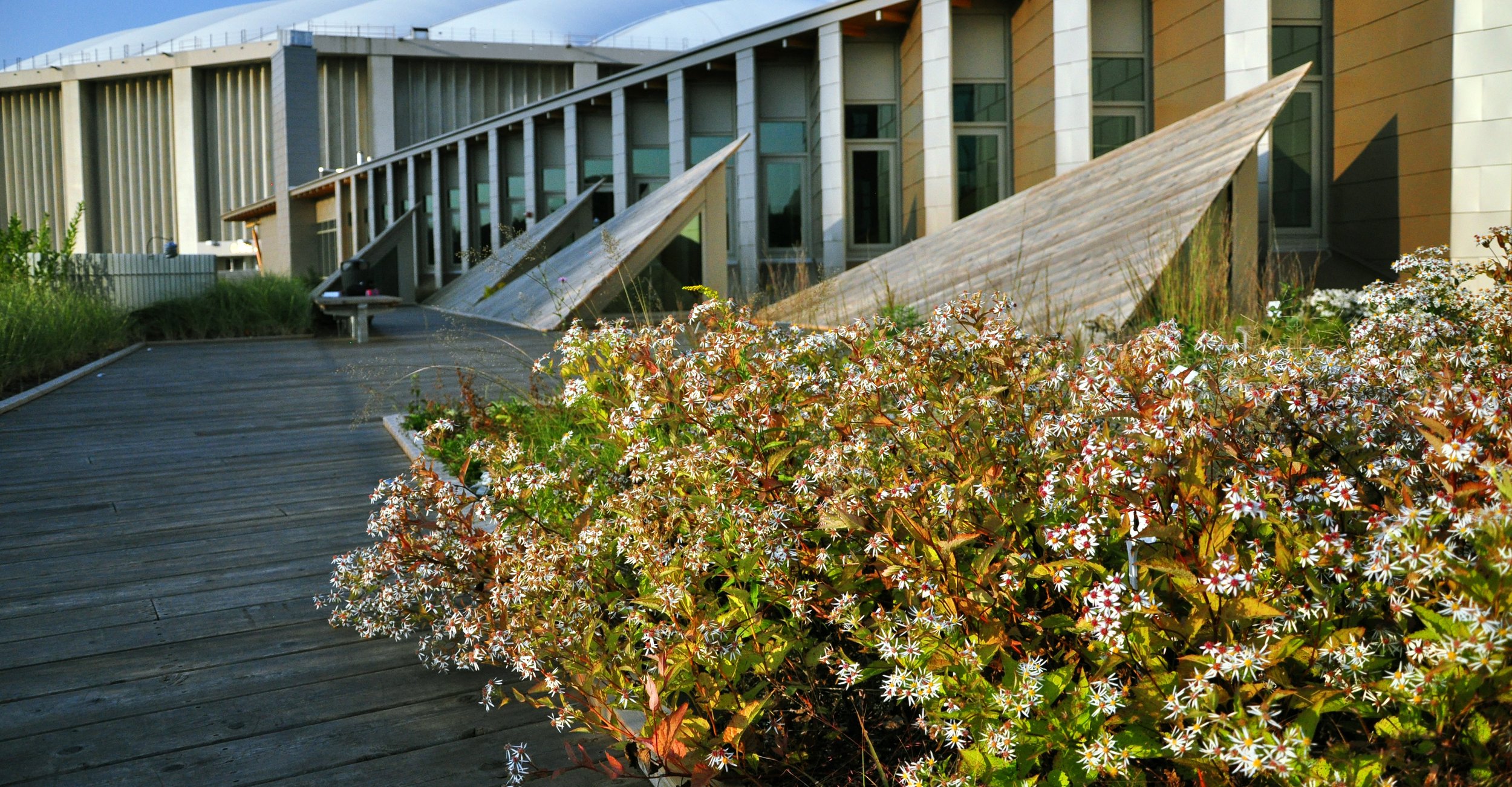
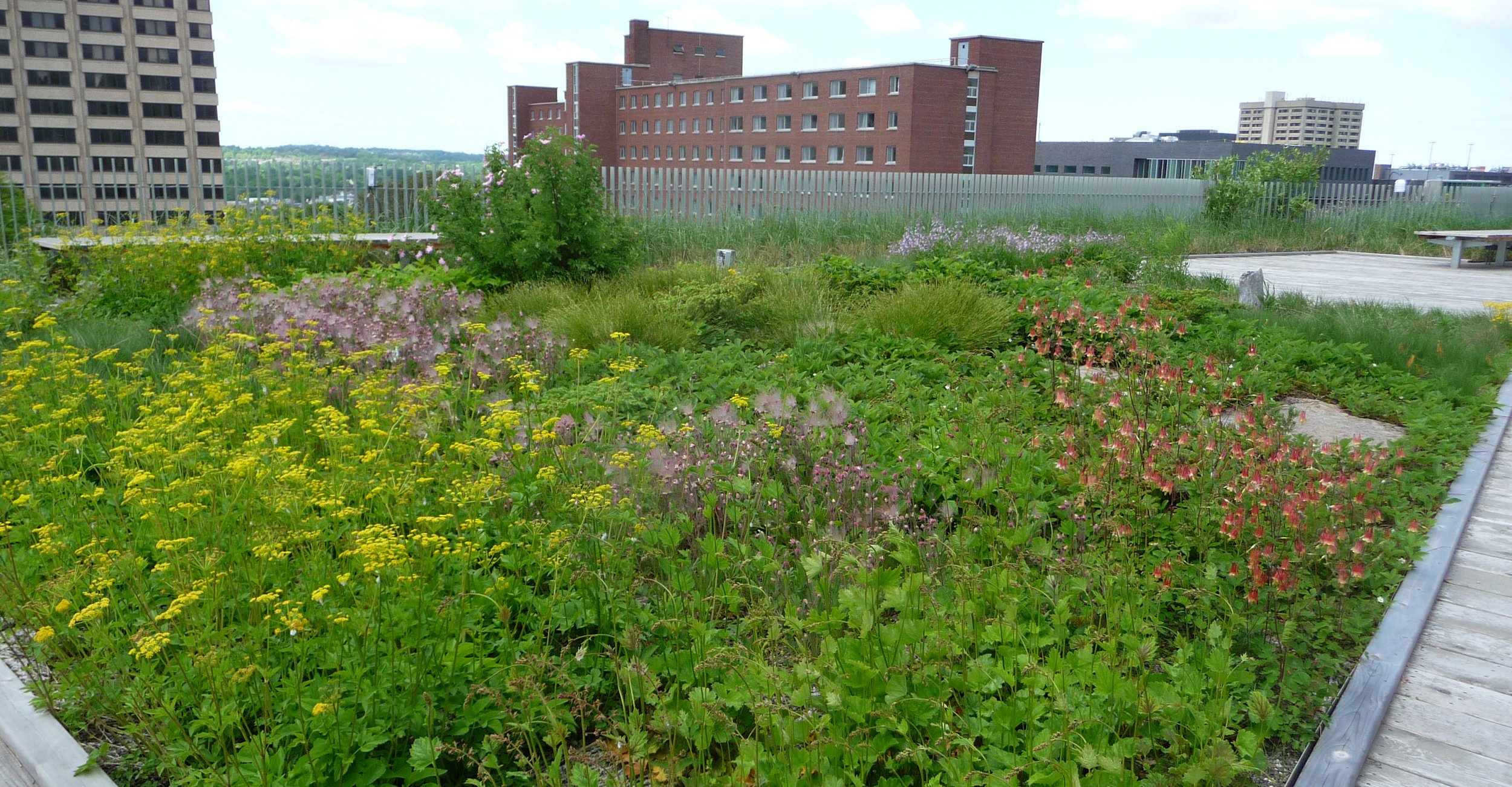
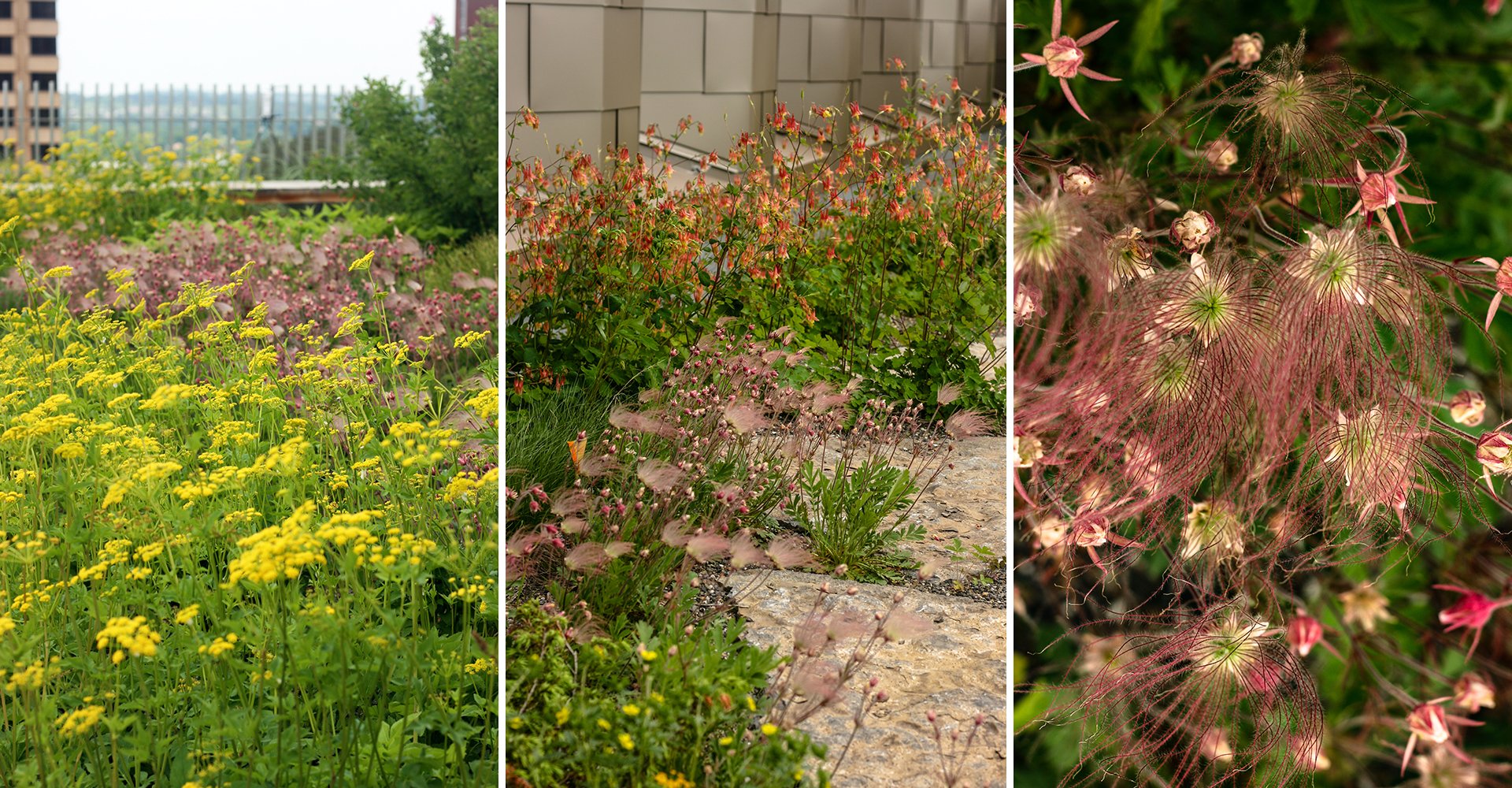
how well do integrated landscape systems work as green stormwater infrastructure?
SUNY COLLEGE OF ENVIRONMENTAL SCIENCE & FORESTRY
RESEARCH COMPONENT
The 9,400-square-foot green roof atop SUNY-ESF’s Gateway Center offers students and faculty a living laboratory, three stories up. The intensive green roof uniquely supports rare plant communities from the nearby Alvars and Lake Ontario Dunes, thereby demonstrating that native flora and fauna can indeed flourish within green roofs, when we look to the right reference communities. To create this beautiful space and unique, didactic asset, Andropogon’s design and in-house research team collaborated with SUNY-ESF faculty to conduct field visits to reference communities, test potential plant species in rooftop trials, refine the planting plan based on test results, coordinate with local nurseries to provide the necessary plants, and monitor the green roof plant communities after installation. Initial findings suggest that a unique and untapped sector of native plant communities exist for use in green roof design. The success of this project lead Andropogon’s research team to conduct a rigorous assessment of which reference communities within each ecoregion could most appropriately inform native, green-roof planting design throughout North America. In 2016, Andropogon published this research in The Journal of Green Building.
As one of the nation’s leading environmental education and research institutions, The State University of New York’s College of Environmental Science and Forestry (SUNY-ESF) has experienced substantial growth over the past decade. In response, SUNY-ESF, in conjunction with the State University Construction Fund, commissioned the design and construction of a new, LEED Platinum Gateway Center. To utilize the limited site footprint and maximize available campus open space, the project team incorporated a fully accessible 9,400 SF intensive green roof, which stretches along the entire western façade of the building. Virtually every aspect of the green roof is influenced by the contents and context of two rare plant communities native to the Alvar and Lake Ontario Dune regions of New York.
The green roof at the SUNY-ESF Gateway Center is a truly unique place. The intensive green roof brings together two distinctive plant communities within a welcoming public space and also serves as an outdoor classroom and laboratory allowing faculty and students to have unique access to rare, native New York plant communities to study how design can impact our environment. Several of our team members graduated from SUNY-ESF, so working on this groundbreaking project with students and faculty was truly an amazing experience.
Virtually every aspect of the green roof is influenced by the two rare plant communities. The central circulation spine acts as an organizing framework for the planting. Its scale swells from north to south with each ‘knuckle’ denoting a slightly larger room, providing embedded flexibility for different user groups and events. The final planting plan included the separation of the plant communities into separate areas to highlight their unique habitats.
In nature, the hardy Alvar grassland plant communities grow on exposed limestone bedrock in thin, infertile soil. The Lake Ontario Dune plant communities are adapted to thrive in the harsh, unstable, and ever-shifting sandy landscapes at the edge of the Great Lakes. At the SUNY-ESF Gateway Center, the dune community occupies a continuous band around the perimeter of the green roof, coinciding with a dune-fence-inspired safety barrier. The Alvar plantings exist along the building wall and within an interior island.
PROJECT INFORMATION
Location: Syracuse, NY
Size: 28,000 SF Site / 9,400 SF Green Roof
Role: Landscape Architect of Record
Services: Research, Sustainable Site Design, Green Roof Design, Construction Documentation and Observation
PUBLICATIONS
Lauren Mandel, Emily McCoy, and Toby Liss, “Reference Community: Adapting Native Plants to North American Green Roofs” in Journal of Green Building, v. 11, n. 4 (2016): 15-36. http://issuu.com/andropogon/docs/2016_fall_issue_green_building_jour?e=5184388/42985318
AWARDS
2016 Land Ethics Merit Award from Bowman’s Hill Wildlife Preserve
2014 AIA COTE Top Ten Green Building Project from the AIA Committee on the Environment
2014 ASLA NY Merit Award from ASLA NY
2014 SCUP Honor Award in Architecture from the Society for College and University Planning
2014 Honor Award from the Boston Society of Architects
